Bipolar Coagulation
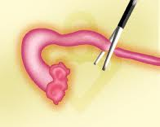
Bipolar Coagulation is the most common method of laparoscopic female tubal ligation. This procedure uses electrical current to cauterize sections of the fallopian tube, limiting damage to the segment between two poles of electrically conducting forceps. Typically, 2-3 adjacent sites are coagulated, and about 2-5 cm of the tube is lost. This method is reversible, and pregnancy success rates after reversal are approximately 70%, depending on the extent of tubal damage.
To begin your tubal reversal process, please complete the schedule for a free phone consultation HERE.
Fimbriectomy

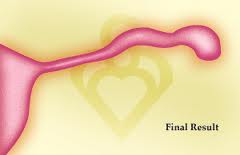
Fimbriectomy is a tubal ligation method that removes the portion of the fallopian tube closest to the ovary, preventing the ovary from capturing and transferring eggs. Reversal involves opening the remaining tube and reshaping the inner lining to restore egg capture. However, this procedure has the lowest success rates for reversal; repairing is generally not recommended. In such cases, in vitro fertilization (IVF) is the preferred treatment option.
To begin your IVF process, please complete the schedule for a free phone consultation HERE.
Irving Procedure
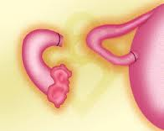
The Irving method of tubal ligation involves placing two ligatures around the proximal to mid-segment of the fallopian tube and removing the segment between them. The end of the tube connected to the uterus is sutured into the back of the uterus, while the other is buried in the connective tissue beneath the tube. This method differs significantly from other tubal ligation techniques. While reversible, the success rates for reversal are generally lower than those of other methods. However, if the remaining segments are healthy, pregnancy success rates can reach approximately 70% after reversal.
To begin your tubal reversal process, please complete the schedule for a free phone consultation HERE.
Monopolar Coagulation
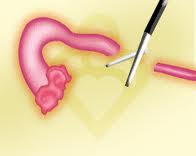
Monopolar Coagulation, a less common tubal ligation method compared to Bipolar Coagulation, uses electrical current to cauterize the fallopian tube. Unlike the bipolar method, the radiating current in monopolar coagulation can extend beyond the coagulation site, potentially damaging a larger portion of the tube. In many cases, the tubes are also cut after cauterization. Due to the extent of damage, this procedure can significantly reduce pregnancy rates to approximately 45%. Success rates can reach 70% if the remaining tubal length exceeds 5 centimeters. This type of tubal ligation is reversible, and the tubes can often be repaired effectively.
To begin your tubal reversal process, please complete the schedule for a free phone consultation HERE.
Tubal Clip
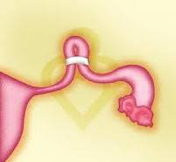
The tubal or Hulka Clip technique involves applying a permanent clip to the fallopian tube. Once applied and fastened, the clip disallows the transference of eggs to the ovary. This procedure is best for reversal and pregnancy success, which can be as high as 85%.
To begin your tubal reversal process, please complete the schedule for a free phone consultation HERE.
Fun fact: Dr. Toma learned the art of tubal reversal directly from Dr. Jaroslav Hulka, the inventor of the Hulka clip while studying at the UNC School of Medicine. Under Dr. Hulka’s mentorship, Dr. Toma gained expertise in using the Hulka clip and techniques for reversing and repairing tubal ligations—knowledge he has refined and perfected over the past 20 years. This foundation and years of experience have made Dr. Toma a highly skilled and dedicated surgeon.
Tubal Ring
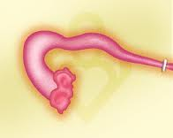
The silastic band, or Falope ring method, involves doubling over the fallopian tube and applying a band to cut off the blood supply. This leads to scar tissue formation, which separates the damaged section of the tube from the healthy portion to prevent pregnancy. This reversible procedure is offered at our facility, and pregnancy success rates can be high if minimal tube damage has occurred.
To begin your tubal reversal process, please complete the schedule for a free phone consultation HERE.
Pomeroy Tubal Ligation
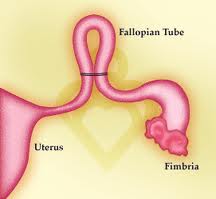 This method of tubal ligation, often referred to as “cut, tied, and burned,” involves creating a loop of the fallopian tube, securing it with a suture, cutting the loop, and cauterizing (burning) the ends. Despite the cauterization, this method is highly suitable for reversal, as the burned ends are removed during the tubal reversal procedure. The remaining healthy tube sections typically allow for successful repair and fertility restoration.
This method of tubal ligation, often referred to as “cut, tied, and burned,” involves creating a loop of the fallopian tube, securing it with a suture, cutting the loop, and cauterizing (burning) the ends. Despite the cauterization, this method is highly suitable for reversal, as the burned ends are removed during the tubal reversal procedure. The remaining healthy tube sections typically allow for successful repair and fertility restoration.
To begin your tubal reversal process, please complete the schedule for a free phone consultation HERE.
Essure
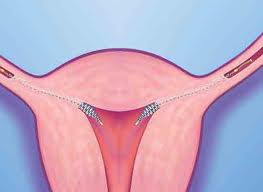 This method of tubal ligation involves placing two small metal and fiber coils in the fallopian tubes. Following insertion, scar tissue forms around these coils, blocking the tubes to prevent sperm from reaching an egg. If you’re experiencing negative side effects from Essure and want removal (not reversal), contact NCCRM to learn more about your options.
This method of tubal ligation involves placing two small metal and fiber coils in the fallopian tubes. Following insertion, scar tissue forms around these coils, blocking the tubes to prevent sperm from reaching an egg. If you’re experiencing negative side effects from Essure and want removal (not reversal), contact NCCRM to learn more about your options.
To begin your tubal reversal process, please complete the schedule for a free phone consultation HERE.
Adiana
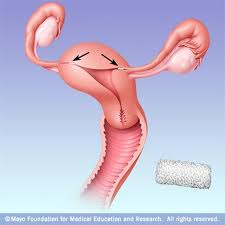 This method of tubal ligation involves placing two small silicone inserts into the fallopian tubes. During the procedure, a small section of each fallopian tube is heated, and the silicone pieces are inserted. Over time, scar tissue forms around the inserts, effectively blocking the tubes and preventing sperm from reaching the egg, thereby providing permanent contraception. In 2009, the FDA approved the Adiana sterilization procedure, similar to Essure’s technique. Both procedures can be reversed, allowing women to have their fallopian tubes reopened. This restoration often provides higher conception rates compared to traditional IVF treatments, offering an alternative path to achieving pregnancy.
This method of tubal ligation involves placing two small silicone inserts into the fallopian tubes. During the procedure, a small section of each fallopian tube is heated, and the silicone pieces are inserted. Over time, scar tissue forms around the inserts, effectively blocking the tubes and preventing sperm from reaching the egg, thereby providing permanent contraception. In 2009, the FDA approved the Adiana sterilization procedure, similar to Essure’s technique. Both procedures can be reversed, allowing women to have their fallopian tubes reopened. This restoration often provides higher conception rates compared to traditional IVF treatments, offering an alternative path to achieving pregnancy.
- Learn more about Adiana Removal HERE.
To begin your tubal reversal process, please complete the schedule for a free phone consultation HERE.
Important: To determine eligibility for a tubal reversal procedure at our surgery center, you must provide your accurate height and weight. Providing false information may result in the cancellation of your surgery and forfeiture of fees. Please complete these questions honestly in the forms section of our website.
Calculate your BMI here to understand how your weight may influence the cost of your tubal reversal surgery.
Please note that all patients undergoing tubal reversal surgery at NCCRM must be accompanied by an adult (18 years or older) on the day of the procedure. After the surgery, your companion will drive you home or to your recovery location, such as a hotel.
- Click here to visit our video page and watch videos about Tubal Reversal Surgery at NCCRM.
- Click here to see the success rates of tubal reversal surgery at NCCRM.
- Schedule a free tubal ligation reversal consultation HERE
For more information, please call 984-263-3396 ext. 180 or



